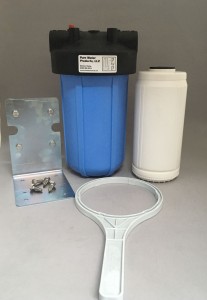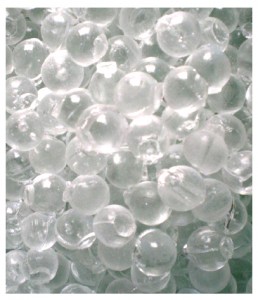Denver Water wants to double the amount of recycled water used in the city. The health department is not sure it’s safe
Strain on the Colorado River, treatment budgets, could be eased by using recycled water for growing dope, flushing toilets
By Bruce Finley
Gazette Introductory Note. This is a truncated version of a much longer article that we’re reprinting to illustrate the increasing reuse of water by cities as well as the legal intricacies of water recycling. The full article is here.
Water is asking for state permission to expand the uses of recycled water to include flushing toilets in commercial buildings, washing cows and pigs at the National Western Stock Show, and irrigating crops such as marijuana.
This could increase the 80 or so big customers in metro Denver who already tap a 70-mile network of underground purple pipes carrying recycled water, cleaned to meet the drinking water standards that applied in the 1980s.
But state health officials aren’t sure it’s safe to allow wider use.
A Denver Water plan calls for at least doubling the amount of recycled water the utility provides, beyond the current 2.6 billion gallons a year to more than 5.6 billion gallons by 2020.
Using more recycled water could save money because stripping away contaminants to meet current drinking water standards increasingly requires costly, energy-intensive treatment. And reusing water reduces Denver’s need to siphon more H2O out of the over-tapped Colorado River.
Denver’s marijuana sector, alone, could make a big difference. Dope growers have emerged as significant guzzlers, feeding plants an estimated 146 million gallons a year of drinking water. That’s more than the 98 million gallons that metro Denver brewers use to make beer.
“This is where the world is going,” Denver Water chief executive Jim Lochhead said. “Utilities are exploring this concept of ‘one water,’ the right water quality for the right purpose, and making the most efficient use of water.”
Rising temperatures from climate change and exhaustion of the river compel new approaches, he said.
“The demands on our system are going to increase simply because it is going to be warmer. People and plants are going to be using more water,” Lochhead said. “The prospects of a major new diversion project on the Colorado River are difficult at best.”
The Colorado Department of Public Health and Environment has raised multiple concerns.
State water quality staffers are reviewing “adequate control of pathogens,” including the potential for bacteria to grow in the purple pipes, an agency spokeswoman said. That’s because irrigation of crops for human consumption could mean more people are exposed to bacteria. They’re also evaluating the potential for salts to build up in soils and groundwater. And they’re looking at issues around build-up of “antibiotic resistant genes” that recycled water could accelerate. (Bacteria that develop resistance to antibiotics can reproduce and pass on that resistance, creating many more antibiotic resistant bacteria.)
“We’re as much about water conservation as anyone else,” director Larry Wolk said. “If there’s reuse potential for that kind of water that doesn’t pose any type of health risk or has an acceptable health risk, then it is something we definitely should consider.”
“We won’t know until that technical assessment is complete if it is an acceptable risk or not. Just because it was OK in 1980 doesn’t necessarily mean it is OK today , because we know a lot more, after nearly 40 years, than we knew then,”Wolk said.
“But we are all about reuse,” Wolk said, “whether it is produced water, recycled water, graywater, if there is an acceptable health risk.”
A CDPHE meeting is scheduled for next week to launch a rulemaking process that will run through August 2018. Health officials said they want to hear from all sides and said any new uses of recycled water won’t hurt people or the environment.
State rules currently allow use of recycled water for car washing, landscape irrigation, industrial systems and putting out fires.
For years, Denver Water crews have been capturing wastewater, treating it and sending it back through the city. It is water initially diverted from the Colorado River and moved through tunnels under the Continental Divide. (Denver Water legally is limited to a one-time use of its other water that originates here in South Platte River Basin, because downriver agricultural producers have rights to use Denver’s “return flows.”) The purple-pipe water is classified as nonpotable, but utility officials emphasized it meets the standards of water people were drinking in the 1980s.
The 80 current users of recycled water include irrigators and industrial plants, nine schools, 34 parks, five golf courses and the Denver Zoo.
Source: Denver Post.
Pure Water Gazette Fair Use Statement








